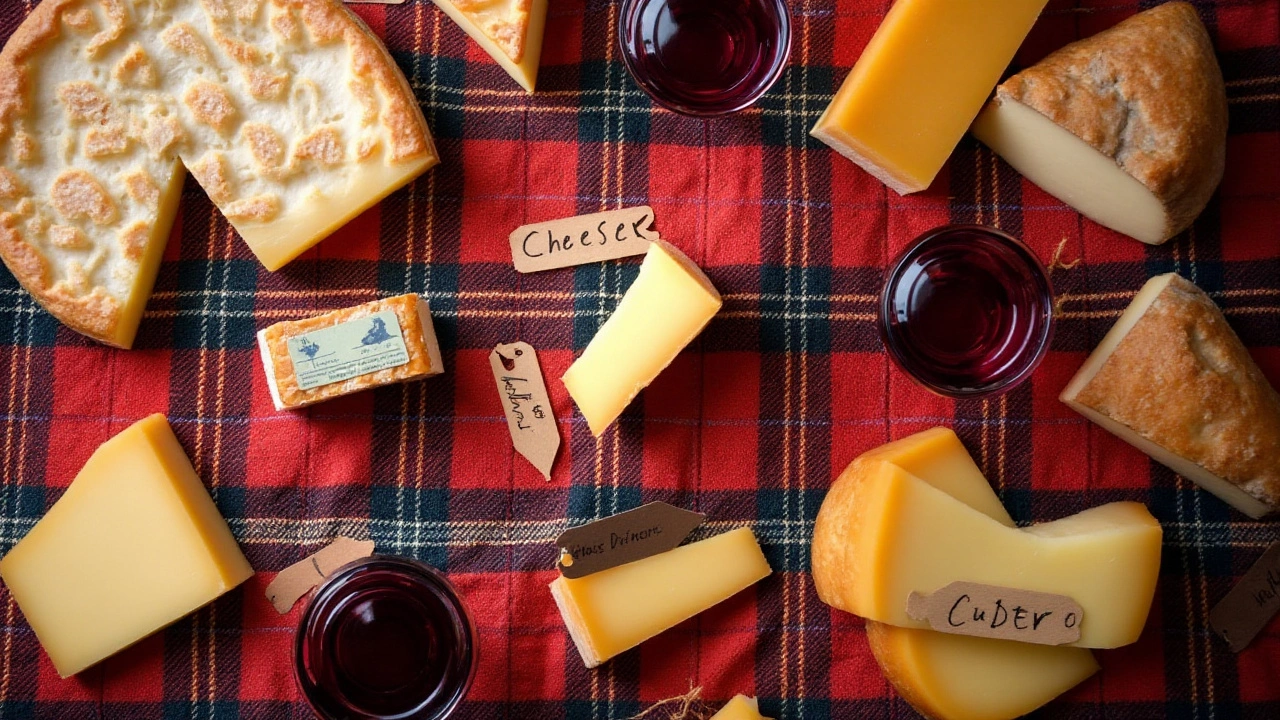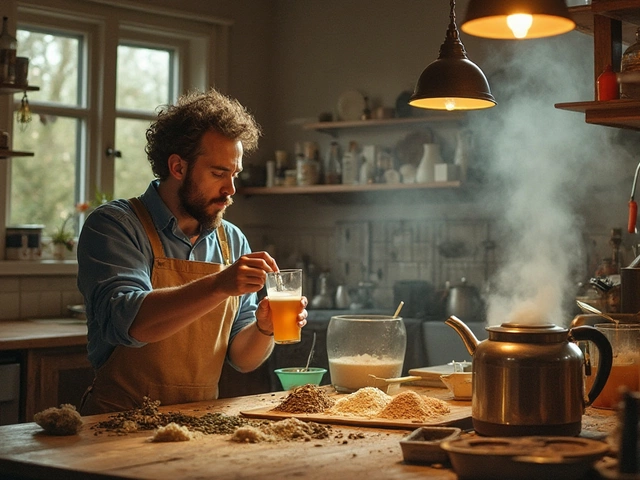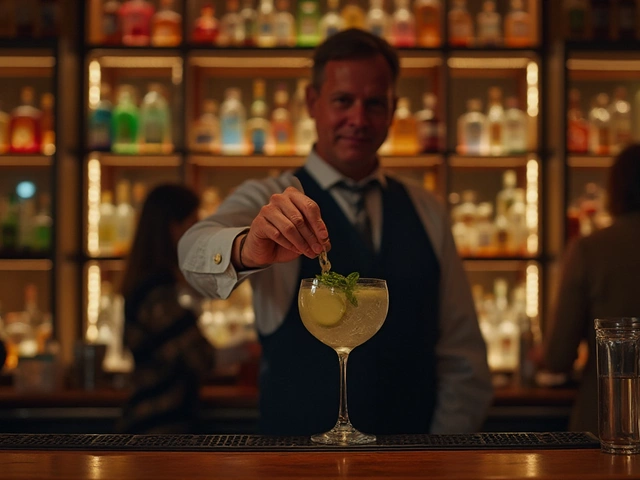There's a certain magic in the union of cheese and red wine, a harmony that has been celebrated across cultures and ages. Whether you're a seasoned connoisseur or a curious newbie, understanding how these flavors mingle can elevate both casual gatherings and intimate dinner parties. Let's embark on a flavorful journey to uncover which cheeses harmonize with the robust profiles of red wine, ensuring your next tasting session is one to remember.
Choosing the perfect cheese to complement red wine involves both art and science. Key elements include the intensity of flavor, texture, and acidity. Each of these factors plays a role in creating that perfect bite, where wine and cheese enhance each other's best features. So grab a glass, and let's dive into the exquisite world of wine and cheese pairings.
- Introduction to Pairing Basics
- Popular Red Wines and Matching Cheeses
- Unconventional Pairings to Try
- Tips for a Perfect Cheese and Wine Experience
- Creating the Ultimate Cheese Board
Introduction to Pairing Basics
Creating the perfect duo of cheese and wine is much like orchestrating a symphony—each component plays an integral role in the ultimate culinary performance. The pairing of cheese with red wine, in particular, is a pursuit cherished by many food lovers. The process is rooted in a deep understanding of the complex interplay between flavors, textures, and aromas, which offers a canvas for endless experimentation. At its core, successful pairing revolves around balance, where neither the wine nor the cheese should overpower the other, but instead, complement and enhance their respective qualities to create an unforgettable experience.
Delving into the science, both cheese and wine share certain components, such as acids and fats, that react with each other on the palate. The richness of cheese, marked by its creamy fats, often finds its perfect match in the tannins present in red wine. Tannins, those naturally-occurring compounds derived from grape skins, provide a pleasing astringency that can cut through the cheese's fatness. This balancing act not only prevents the cheese from overwhelming the palate but also accentuates the fruitiness and depth of the wine. Among popular pairings, a robust Cabernet Sauvignon with an aged cheddar is a classic go-to for many aficionados—a testament to this fine balance.
"The combination of cheese and wine is more than about taste; it is a blend of tradition and taste that transforms each moment of consumption into a shared cultural experience," said renowned French sommelier François Chartier.
Understanding the fundamental taste profiles of both cheese and wine is essential for achieving a harmonious pairing. Hard cheeses, such as Parmesan or Gruyère, often pair better with bold and tannic red wines due to their salty and umami characteristics, which can mellow the wine’s robust flavors. On the other hand, softer cheeses, like Brie or Camembert, are commonly paired with lighter red wines such as Pinot Noir, where the wines’ bright acidity and subtle profiles can complement rather than dominate the delicate nature of the cheese. These basic principles serve as a foundation for exploring other combinations, including those less conventional.
Exploring Texture and Flavor Matching
Texture is another critical factor that influences pairing decisions, as it can impact how flavors are perceived in each bite and sip. Cheeses with a creamy or buttery texture often leave a lingering fattiness on the palate, which can be beautifully offset by a wine’s acidity or tannic structure. While cheese flavors can range from nutty to grassy to barnyard, wine carries a spectrum from fruity to earthy to spicy, making any pairing a delightful puzzle to solve. By understanding these dimensions and sampling a variety of both cheeses and wines, one can begin to develop a more intuitive sense for what combinations will shine.
Embarking on this journey of pairing basics should fill you with excitement rather than apprehension. With the broad range of cheese pairing tips available, the goal is not only to follow established wisdom but also to experiment and discover personal preferences. Keep sampling, comparing notes, and paying attention to what works and what does not on your palate, and before long, you'll be hosting cheese and wine nights with confidence, impressing friends and family with your newfound expertise.
Popular Red Wines and Matching Cheeses
When it comes to creating the perfect wine and cheese pairing, the diversity and character of red wine bring forth a culinary adventure like no other. Each type of red wine carries unique notes and profiles, begging for the right cheese to accentuate its best qualities. Let's dive into some of the most popular red wines and the cheeses that bring out the best in them. Picture a robust Cabernet Sauvignon; this wine’s deep flavor profile, rich with tannins, demands bold companions. Cheeses like aged cheddar or Gouda can hold their ground against its strength, offering a match made in heaven. The sharpness and buttery texture of these cheeses offset the wine's full-bodied character, creating a symphony of flavors.
For the lovers of Pinot Noir, known for its soft tannins and earthy nuances, consider pairing it with Brie or Camembert. The lush texture and creamy nature of these soft cheeses complement Pinot Noir's subtlety, resulting in a pairing that is both elegant and balanced. Each bite feels like a gentle dance between the wine’s berry notes and the cheese’s mild umami.
Wine and cheese lovers often find joy in pairing a glass of Merlot with Blue cheese. This pairing is a testament to contrasting flavors working in harmony. The wine’s smooth and mellow profile pairs beautifully with the pungent and salty characteristics of Blue cheese, creating a taste explosion that is simply irresistible.
Ever thought about the spicy edge of a Syrah and the nutty notes of Manchego? This pairing is a fantastic example of harmony in complexity. Manchego’s firm texture and buttery flavor balance the bold and peppery notes of Syrah, providing a rich culinary experience. As the right cheese can mellow out the spiciness of the wine, the combination is nothing short of culinary alchemy.
According to a
quote from a renowned sommelier, "The best wine and cheese pairings are those where neither overwhelms the other, but instead, they enhance one another’s unique flavors." Enjoy your adventure creating beautiful combinations with these popular red wines and their optimal cheese partners.

Unconventional Pairings to Try
When it comes to pairing cheese and red wine, it is easy to get swept away by traditional combinations. However, exploring unconventional pairings can lead to delightful surprises and expand your palate. Let's venture into a world where unique flavors collide, creating a symphony of taste that challenges conventional boundaries. For instance, pairing a bold Zinfandel with a slice of blue cheese, like Gorgonzola or Roquefort, creates an unexpected harmony. The wine's jammy fruitiness mellows the cheese's intense, salty tang, resulting in a balanced, intriguing palate experience.
Another fascinating pairing to consider is Malbec with smoked Gouda. The earthy undertones of Malbec beautifully complement the nutty, smoky flavors of Gouda, making it a delightful partner for both casual snacking and an elegant cheese board centerpiece. With its smooth tannins and notes of dark fruits, Malbec enhances the creamy texture of Gouda, allowing each bite to be savored with newfound appreciation.
"The art of pairing isn't just about matching intensities, it's about storytelling," says sommelier Alice Feiring. "When you find that surprising match, it's like discovering a new chapter in a familiar book."
If you're feeling adventurous, try pairing a spicy Shiraz with a tangy Manchego. This duo may seem unlikely at first glance, but Shiraz's bold spiciness dances playfully with the creamy, slightly piquant undertones of Manchego. This experience is all about balance, as the wine's peppery notes cut through the cheese's richness, resulting in a pairing that excites the taste buds with every sip and morsel.
Creating a Unique Tasting Experience
When trying out unconventional pairings, it's crucial to consider the setting and presentation. For instance, creating a themed tasting night can make the exploration more engaging. Label each cheese with its corresponding red wine, and provide tasting notes or snippets about each pairing's origins for an added educational element.
- Start with lighter wines and cheeses, progressing to bolder flavors.
- Encourage guests to share their flavor perceptions and experiences.
- Provide palate cleansers like water or mild crackers between tastings.
Exploring unconventional cheese and wine pairings opens a gateway to creativity and innovation in the kitchen. It allows one to not only enjoy what these combinations have to offer but also to appreciate the unexpected harmony that can arise from pushing the boundaries of traditional palates. So, uncork a bottle of your finest red, gather an array of cheeses, and embark on a delicious adventure that promises to surprise and delight.
Tips for a Perfect Cheese and Wine Experience
Diving into the delightful world of cheese and red wine pairing can be a rewarding experience, one that tantalizes the taste buds and creates memorable moments. To truly savor this duo, it’s important to follow a few simple tips. First, consider the wine’s body along with the cheese's texture and flavor intensity. A full-bodied red wine like Cabernet Sauvignon pairs beautifully with a bold cheese such as aged cheddar. The richness in both creates a rustic melody that enhances the complex layers present in the wine. Always aim to balance the flavors by choosing cheeses that can stand up to the depth of the wine without overpowering it.
Another essential tip is to pay attention to the temperature. Allow your cheese to sit out for about an hour before serving, as room-temperature cheese releases more flavor. Similarly, red wines reveal their true character when they're allowed to breathe. Uncork the bottle about an hour before tasting to let the flavors open up. When both the cheese and the wine are at optimal temperature, they create a symphony of flavors that’s simply unparalleled. As Cheese authority Janet Fletcher once said,
"When paired thoughtfully, cheese will amplify the aroma and flavors of wine, creating a heightened taste experience."
Don't forget the importance of variety on your cheese platter. Aim for an assortment of different cheese types and textures to provide range. This will not only delight the palate but also cater to varied preferences among your guests. Consider including a soft cheese like Brie, a hard one such as Parmesan, and a blue cheese for those who enjoy a more pungent profile. Arrange them clockwise from the mildest to the strongest, guiding the tasting journey logically. Add contrast by incorporating fresh and dried fruits, nuts, and perhaps a dollop of honey to accentuate the flavors.
Investing in high-quality accompaniments is also crucial for an ideal pairing experience. Good quality crackers and artisanal bread serve as excellent vehicles for cheese, allowing you to explore textures and flavors without overwhelming the sensations that the cheese and red wine bring. Keep portions modest, encouraging guests to savor every morsel, and remember, moderation is key to appreciating the nuances of both cheese and wine.
Finally, encourage conversation and exploration. A cheese and wine gathering is not only about the tasting journey but also about sharing experiences and opinions. Encourage guests to articulate what they taste, what surprised them, or what their preferences are. A beautifully curated wine and cheese experience is rich with discovery, a joyful canvas where art, culture, and community converge.

Creating the Ultimate Cheese Board
The art of crafting an exceptional cheese board goes beyond simply placing cheese on a platter. It’s about creating an experience, a visual and flavorful journey that pleases not just the taste buds but the senses. To create the ultimate cheese board that perfectly pairs with red wine, start by selecting a variety of cheeses that offer an array of tastes, textures, and aromas. Incorporating cheeses with differing milk sources—such as cow, sheep, and goat—adds complexity. Don't shy away from mixing a creamy brie, a crumbly blue, and a firm aged cheddar. These cheeses not only complement each other but also the rich notes in the wine.
Think about adding elements that will enhance the cheese and wine pairing. Fresh and dried fruits, like apples, grapes, and figs, bring a natural sweetness that can balance the saltiness and richness of certain cheeses. Nuts such as almonds and walnuts add a satisfying crunch, while honey and jams offer a touch of sweetness that contrasts beautifully with the acidity of the wine. The idea is to create an interplay of flavors where each bite tells a different story, enticing quickly for the next taste.
Presentation is key, so consider the layout of your components on the board. A well-arranged board invites guests in and makes sampling effortless. Cheese should always remain at room temperature, around 21°C (70°F), to allow its full flavor to express. Use a large wooden board or a contrasting marble slab as a base, and give each cheese enough room to be sliced easily. Arrange accompaniments in clusters around the cheeses, creating a natural flow across the board. Keeping a sharp cheese knife for each cheese type maintains the individuality of flavors.
"Cheese and wine clearly deserve an award for being the best quality matches," says Laura Werlin, a celebrated cheese expert. Her insights remind us that harmony in flavor is a journey worth pursuing with diligence and passion.
To perfect the board, it's not just about the things you include, but how you anticipate the preferences and dietary needs of your guests. Offering gluten-free crackers or bread options, and labeling cheeses that are lactose-free, ensures everyone can partake in the delectable spread. Remember, a great cheese board is interactive, inviting conversation and sharing. Encourage your guests to try different combinations and share their thoughts, turning your creation into an engaging tasting experience.
A well-curated cheese board doesn’t have to rely solely on quantity. It's the quality of what's included that makes it memorable. By focusing on balancing flavors and textures, the result is a magnificent accompaniment to any red wine, sure to make your gathering both memorable and delicious.


